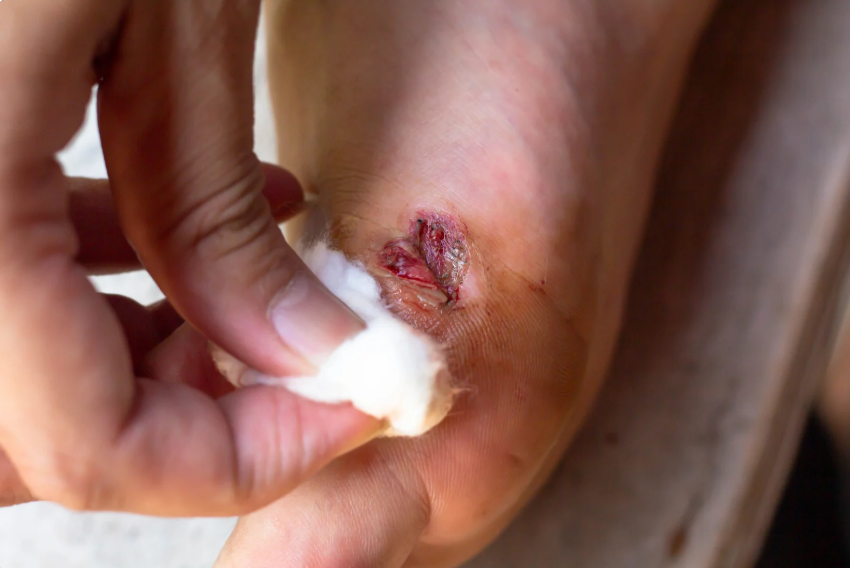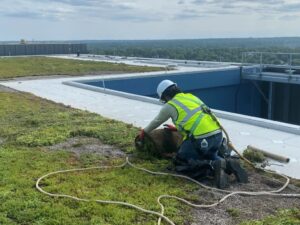Dead tissue, also known as necrotic tissue, forms in wounds where blood supply has been compromised, often due to trauma, infection, or chronic conditions like diabetes. When left untreated, this tissue becomes a major obstacle to healing, encouraging bacterial growth and inflammation. Dead tissue removal is a vital medical procedure that clears the path for healthy regeneration. At Kalingap Wound Care Clinic, this essential treatment is handled by experienced wound care professionals who are trained to provide safe and effective results for all wound types.
Why Dead Tissue Hinders Wound Healing
Dead tissue creates a barrier that prevents oxygen and nutrients from reaching the living cells beneath. Without proper dead tissue removal, wounds remain stagnant or worsen over time. The presence of necrotic tissue increases the risk of infection, delays healing, and causes foul odours or discharge. Furthermore, it becomes difficult for clinicians to properly assess the wound’s condition when dead tissue covers the surface. Kalingap Wound Care Clinic prioritises timely dead tissue removal to prevent these complications and support faster recovery.
How Dead Tissue Removal Stimulates New Tissue Growth.
Once dead tissue is removed, the body’s natural healing mechanisms are activated. Fresh blood flow returns to the wound site, delivering essential nutrients and immune cells that promote recovery. Dead tissue removal triggers the growth of granulation tissue, the foundation for new skin cells to form. It also facilitates epithelialisation, where healthy cells migrate across the wound to close it. At Kalingap Wound Care Clinic, this process is closely monitored to ensure every patient achieves optimal healing conditions.
Proven Techniques Used for Dead Tissue Removal
There are several recognised methods for dead tissue removal, each suited to specific wound types and healing stages. Surgical debridement is often used for large or infected wounds, while autolytic debridement relies on the body’s natural enzymes and moisture. Enzymatic methods involve topical applications that dissolve necrotic tissue. Mechanical techniques include gentle scrubbing or wound irrigation, and biological debridement uses sterile maggots to clean the wound. Kalingap Wound Care Clinic is equipped with the tools and expertise to perform each of these techniques safely, ensuring the best approach is selected for every patient.
Benefits of Dead Tissue Removal for Wound Recovery
Timely dead tissue removal significantly accelerates the healing process. It reduces the chances of infection, decreases pain and swelling, and prevents long-term complications like sepsis or amputation. The wound becomes cleaner and easier to monitor, allowing healthcare providers to make accurate decisions. Patients also report improved comfort and less wound odour. By choosing Kalingap Wound Care Clinic, patients receive attentive care that prioritises effective dead tissue removal and overall wound management for a faster and smoother recovery.
The Importance of Professional Wound Care and Monitoring
Dead tissue removal should never be attempted at home. It requires professional assessment to determine the safest and most effective method. Wound care specialists at Kalingap Wound Care Clinic are trained in assessing wound severity, selecting the right debridement technique, and preventing further tissue damage. Ongoing monitoring ensures that any changes in the wound are addressed quickly, reducing risks and supporting continuous healing. With expert care, patients can feel confident their wounds are healing correctly and efficiently.
Success Stories: Real Healing Results After Dead Tissue Removal
Many patients who visit Kalingap Wound Care Clinic have chronic wounds that previously showed no signs of healing. After appropriate dead tissue removal and personalised wound care plans, they often report visible improvements within weeks. One patient with a diabetic foot ulcer avoided amputation thanks to prompt surgical debridement and close follow-up. Another recovered from a pressure sore after a combination of enzymatic and autolytic debridement was used. These success stories reflect the clinic’s commitment to delivering high-quality wound care and patient satisfaction.
When to Seek Dead Tissue Removal
If you or a loved one has a wound that is not healing, shows signs of black or yellow crust, or emits an unpleasant odour, it may be time for professional dead tissue removal. Conditions such as diabetic foot ulcers, pressure sores, post-surgical wounds, or infected injuries all benefit from early intervention. Kalingap Wound Care Clinic offers consultations and treatment for these cases, ensuring that patients receive prompt and effective wound care before complications develop.
Supporting Healing by Removing Barriers
Dead tissue removal is one of the most important steps in achieving proper wound healing. By eliminating necrotic tissue, the body is given the opportunity to regenerate and restore damaged areas. With expert treatment from Kalingap Wound Care Clinic, patients can experience not only faster recovery but also peace of mind knowing their health is in good hands. Trust in the expertise of Kalingap’s professionals and give your body the support it needs to heal fully and safely.




